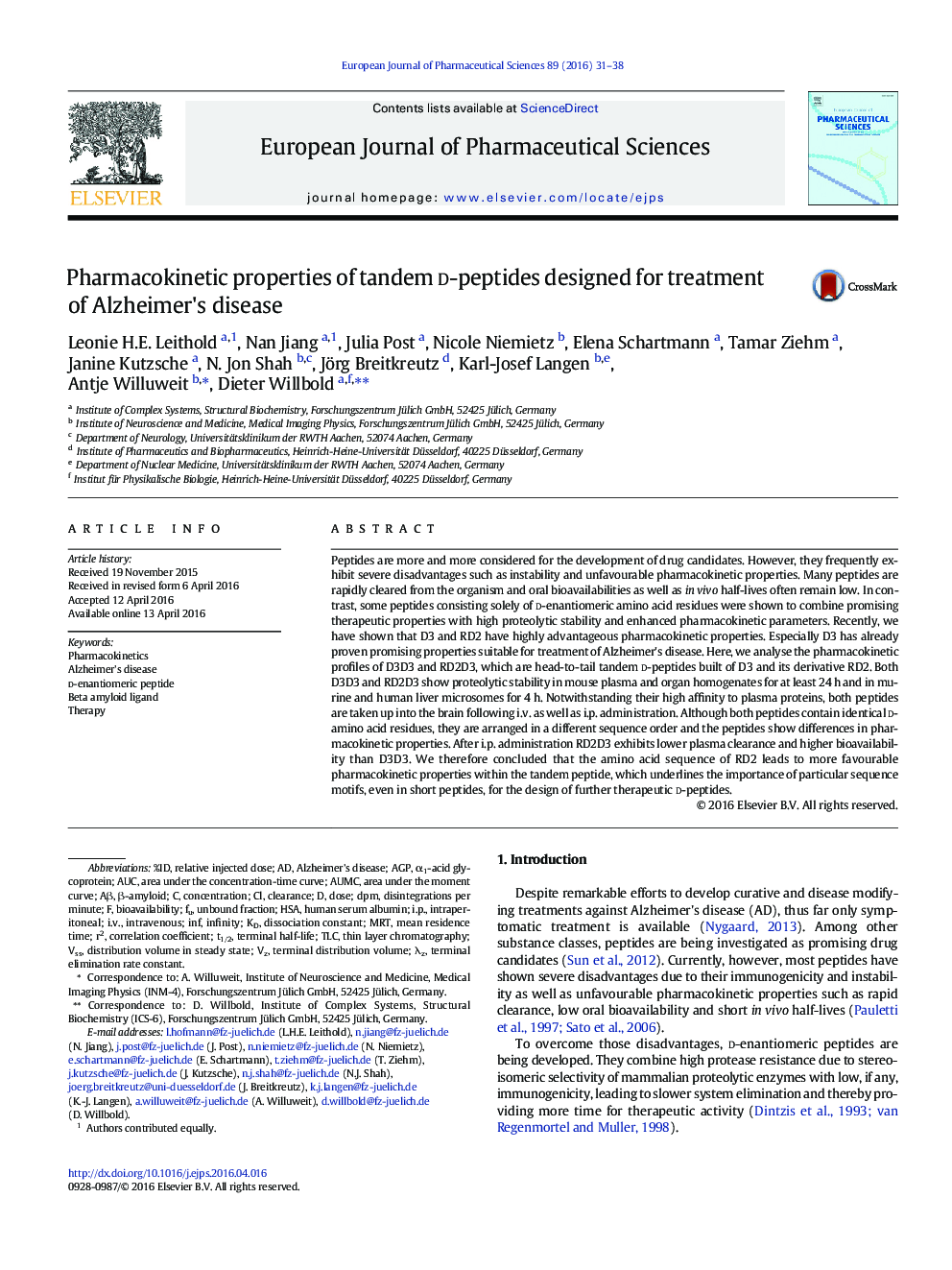| کد مقاله | کد نشریه | سال انتشار | مقاله انگلیسی | نسخه تمام متن |
|---|---|---|---|---|
| 2480041 | 1556161 | 2016 | 8 صفحه PDF | دانلود رایگان |

Peptides are more and more considered for the development of drug candidates. However, they frequently exhibit severe disadvantages such as instability and unfavourable pharmacokinetic properties. Many peptides are rapidly cleared from the organism and oral bioavailabilities as well as in vivo half-lives often remain low. In contrast, some peptides consisting solely of d-enantiomeric amino acid residues were shown to combine promising therapeutic properties with high proteolytic stability and enhanced pharmacokinetic parameters. Recently, we have shown that D3 and RD2 have highly advantageous pharmacokinetic properties. Especially D3 has already proven promising properties suitable for treatment of Alzheimer's disease. Here, we analyse the pharmacokinetic profiles of D3D3 and RD2D3, which are head-to-tail tandem d-peptides built of D3 and its derivative RD2. Both D3D3 and RD2D3 show proteolytic stability in mouse plasma and organ homogenates for at least 24 h and in murine and human liver microsomes for 4 h. Notwithstanding their high affinity to plasma proteins, both peptides are taken up into the brain following i.v. as well as i.p. administration. Although both peptides contain identical d-amino acid residues, they are arranged in a different sequence order and the peptides show differences in pharmacokinetic properties. After i.p. administration RD2D3 exhibits lower plasma clearance and higher bioavailability than D3D3. We therefore concluded that the amino acid sequence of RD2 leads to more favourable pharmacokinetic properties within the tandem peptide, which underlines the importance of particular sequence motifs, even in short peptides, for the design of further therapeutic d-peptides.
Figure optionsDownload high-quality image (211 K)Download as PowerPoint slide
Journal: European Journal of Pharmaceutical Sciences - Volume 89, 30 June 2016, Pages 31–38